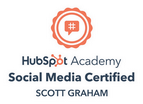Happiness Practice #7: Best Possible Self

This information originally appeared on Greater Good In Action, a website from the Greater Good Science Center at UC Berkeley.
Why You Should Try It
Sometimes our goals in life can be elusive. But research suggests that building optimism about the future can motivate people to work toward that desired future and thus make it more likely to become a reality.
This exercise asks you to imagine your life going as well as it possibly could, then write about this best possible future. By doing so, research suggests that you’ll not only increase your happiness in the present but pave the way for sustained happiness down the line.
Time Required
15 minutes per day for two weeks
How to Do It
Take a moment to imagine your life in the future. What is the best possible life you can imagine? Consider all of the relevant areas of your life, such as your career, academic work, relationships, hobbies, and/or health. What would happen in these areas of your life in your best possible future?
For the next 15 minutes, write continuously about what you imagine this best possible future to be. Use the instructions below to help guide you through this process.
- It may be easy for this exercise to lead you to examine how your current life may not match this best possible future. You may be tempted to think about ways in which accomplishing goals has been difficult for you in the past, or about financial/time/social barriers to being able to make these accomplishments happen. For the purpose of this exercise, however, we encourage you to focus on the future—imagine a brighter future in which you are your best self and your circumstances change just enough to make this best possible life happen.
- This exercise is most useful when it is very specific—if you think about a new job, imagine exactly what you would do, who you would work with, and where it would be. The more specific you are, the more engaged you will be in the exercise and the more you’ll get out of it.
- Be as creative and imaginative as you want, and don’t worry about grammar or spelling.
Evidence that It Works
Sheldon, K. M., & Lyubomirsky, S. (2006). How to increase and sustain positive emotion: The effects of expressing gratitude and visualizing best possible selves. Journal of Positive Psychology, 1(2), 73-82.
People who completed the Best Possible Self exercise daily for two weeks showed increases in positive emotions right after the two-week study ended. Those who kept up with the exercise even after the study was over continued to show increases in positive mood one month later.
Why It Works
By thinking about your best possible future self, you can learn about yourself and what you want in life. This way of thinking can help you restructure your priorities in life in order to reach your goals. Additionally, it can help you increase your sense of control over your life by highlighting what you need to do to achieve your dreams.
Sources
Laura A. King, Ph.D., University of Missouri
Jeffrey Huffman, M.D., Harvard Medical School, Massachusetts General Hospital
 Sign up for a free 30-minute
Sign up for a free 30-minute 













